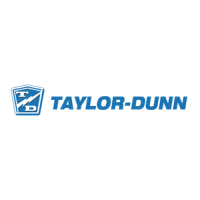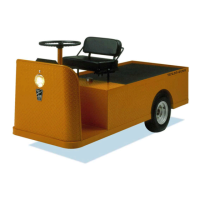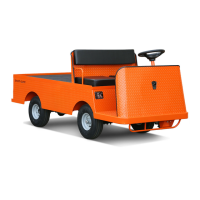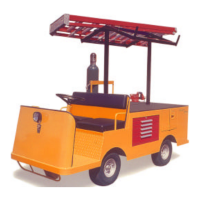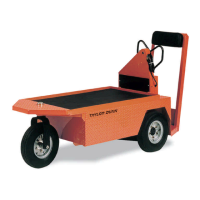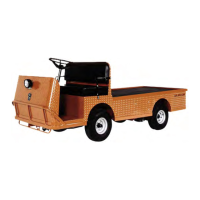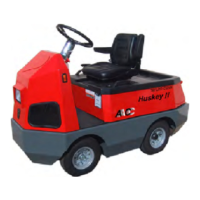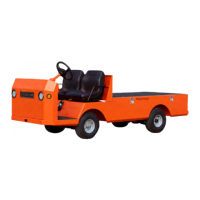Why is Taylor-Dunn Tractor steering hard?
- CcunninghamcatherineJul 30, 2025
Hard steering in your Taylor-Dunn Tractor can be caused by dry lube points in the steering linkage, a damaged king pin or ball joint, or low tire pressure.
Why is Taylor-Dunn Tractor steering hard?
Hard steering in your Taylor-Dunn Tractor can be caused by dry lube points in the steering linkage, a damaged king pin or ball joint, or low tire pressure.
What causes abnormal noise in Taylor-Dunn Tractor?
Abnormal noises in your Taylor-Dunn Tractor may be due to worn drive gears or bearings, worn front or rear axle bearings, loose lug nuts, or worn motor bearings.
Why Taylor-Dunn Tractor steering pulls in one direction?
If the steering on your Taylor-Dunn Tractor pulls in one direction, this could be due to a front end misalignment or low tire pressure.
What causes excessive steering play in Taylor-Dunn Tractor?
Excessive steering play in your Taylor-Dunn Tractor can result from worn ball joints, a mis-adjusted or worn steering gear, or loose steering linkage.
What causes low braking power in Taylor-Dunn Tractor?
Low braking power in your Taylor-Dunn Tractor may be attributed to worn brakes (1/16" wear limit), brake pads contaminated with fluid, brake pedal linkage binding, brakes out of adjustment, or air in the brake lines.
What causes Taylor-Dunn Tractor brake pedal to be soft?
A soft or spongy brake pedal in your Taylor-Dunn Tractor is likely caused by air in the brake lines.
Why is there an oil leak in the rear bearing area of my Taylor-Dunn Tractor?
An oil leak in the rear bearing area of your Taylor-Dunn Tractor could be due to a failed rear wheel bearing or gasket, or the drive being overfilled.
Outlines essential safety rules for vehicle operation.
Details requirements and content for operator training.
Lists minimum requirements for vehicle operators.
Identifies and describes the function of vehicle controls.
Explains the functions and indicators of the Smart View Display.
Lists fault codes displayed by the Smart View system and their meanings.
Provides guidelines for safe and proper vehicle operation.
A checklist for regular vehicle maintenance tasks.
Daily checks to perform on the vehicle.
General guidelines for vehicle maintenance.
A guide to diagnosing and resolving common vehicle issues.
Steps for disassembling and assembling the steering gear and column.
Procedures for inspecting the vehicle's service brakes.
Procedure for inspecting the electric parking brake.
Procedure for bleeding air from the brake system.
Procedures for replacing motor brushes and bearings.
Steps for removing and installing the drive motor.
Procedures for removing and installing rear axles.
Steps for installing the transmission assembly.
Detailed steps for disassembling and reassembling the gear case.
Procedures for disassembling the 3rd member.
Procedures for assembling the 3rd member.
Methods for testing battery condition and performance.
Information on charging vehicle batteries.
Tests to verify control logic input signals.
Procedures for testing the drive motor's continuity and resistance.
Troubleshooting steps for vehicles running in only one direction.
Troubleshooting steps for key switch related faults.
Troubleshooting steps for contactor coil faults.
Troubleshooting steps for accelerator module faults.
Troubleshooting steps for forward/reverse switch faults.
Troubleshooting steps for Anti-Rolloff feature faults.
Troubleshooting steps for the electric motor brake.
Explains LED codes indicating controller status or faults.
Lists fault codes from the Smart View system and their causes.
Key instructions and notes for effective troubleshooting.
Explains error codes indicated by the charger's status LEDs.
Step-by-step guide to resolving charger issues.
Safety precautions for handling brake lining materials.
| Brand | Taylor-Dunn |
|---|---|
| Model | TT-316-36 |
| Category | Utility Vehicle |
| Language | English |
